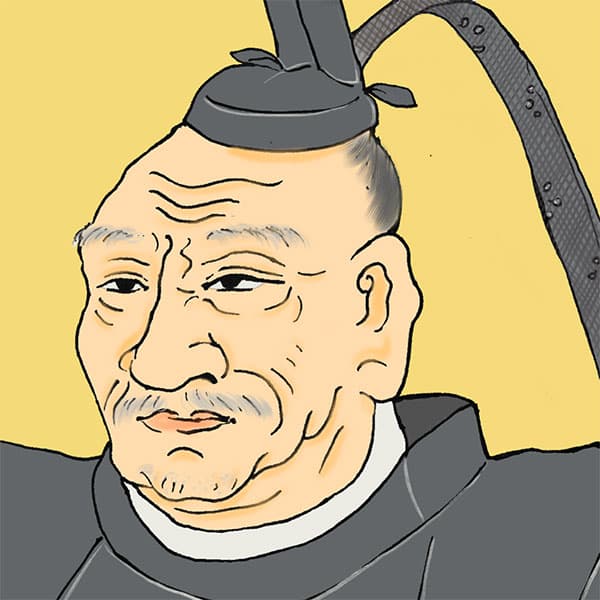- Ozu domainproduced many famous scholars
- The Ozu clan was a domain that ruled the area from Ozu City to Iyo City in Ehime Prefecture. Takatora Todo, who was said to be a master of castle construction, was the first lord of the domain, and through the Wakisaka family, the Kato family ruled the domain until the end of the Edo period. As the domain that owned the steamship Irohamaru operated by Ryoma Sakamoto

Ozu CastleOzu City, Ehime Prefecture
- TOP
- Shikoku
- Ehime Prefecture
- Ozu Castle
| Other name | Hishi Castle, Jizogatake Castle, Otsu Castle |
|---|---|
| castle construction | 1331 |
| address | 903 Ozu, Ozu City, Ehime Prefecture |
| telephone number | 0893-24-1146 |
| Opening hours | 9:00 a.m. to 5:00 p.m. (Enter the castle until 4:30 p.m.) |
| closing day | Open all year round |
| Admission fee | Adults 550 yen / Children 220 yen |
Ozu Castle is said to have its origins in Jizogatake Castle, which was built by Utsunomiya Toyofusa, the governor of Iyo Province, at the end of the Kamakura period.
- Access to Ozu Castle
- Approximately 25 minutes walk from JR Iyo-Ozu Station.
HISTORYOzu Castle, restored in wood by the help of citizens
Ozu Castle is a flat castle located in Ozu City, Ehime Prefecture. This castle, which has many other names such as Otsu Castle and Jizogatake Castle, was the first castle tower to be made of wood and restored after World War II. Let's unravel the history of Ozu Castle.
- Ozu Castle before the Edo period
- Ozu Castle is said to have been built by Toyofusa Utsunomiya, the founder of the Iyo Utsunomiya clan, who was appointed as a shugo in the late Kamakura period. The castle was originally built on Mt. Jizogatake at the confluence of the Hijigawa and Kume rivers, so it was called Jizogatake Castle. The Iyo-Utsunomiya clan then ruled the land of Ozu for over 200 years as a native of Japan. However, in 1567, when the Mori clan, the Sengoku daimyo of Aki Province, dispatched troops to Iyo Province, their territory was invaded and they surrendered. Afterwards, the Iyo-Utsunomiya clan was chased out of Ozu Castle (Jizōgatake Castle) by vassals who were connected to Motochika Chosokabe, the Sengoku daimyo who ruled Tosa Province.
Afterwards, the land of Ozu was reconquered in 1585 by Takakage Kobayakawa, a vassal of Toyotomi Hideyoshi, who eventually became the daimyo of Iyo Province with a wealth of 350,000 koku. Furthermore, Takakage Kobayakawa was the son of Motonari Mori, and his son was Hideaki Kobayakawa, who is famous for betraying the Western army at the Battle of Sekigahara.
However, when Takakage Kobayakawa was transferred to Chikuzen a few years later, Iyo Province was given to Katsutaka Toda. It seems that this change of country was unpopular with the people of the territory, and a revolt broke out against the feudal lord. Katsutaka Toda died of illness while returning to Japan from Korea in 1594.
In 1595, Todo Takatora entered the country as the new ruler. Todo Takatora was a vassal of Toyotomi Hideyoshi, but immediately after his death, he approached Ieyasu and deepened their friendship, and although he was a Tozama daimyo, he became Ieyasu's close aide. He is also considered one of the top three castle builders, along with Yoshitaka Kuroda and Kiyomasa Kato. Todo Takatora developed Ozu Castle as an early modern castle, making it look like it has been restored today. - Ozu Castle in the Edo period
- In 1609, in the early Edo period, Yasuharu Wakisaka was transferred from Sumoto in Awaji to Iyo Province. At that time, Ozu was the junction of the Ozu Kaido and Uwajima Kaido roads that connected Iyo north and south, and there was also a road that ran through the Shikoku Mountains to the east to Tosa Province. In other words, it was a key transportation point in Shikoku. It is said that Todo Takatora took this point into consideration and recommended him to Ieyasu as his successor.
Renovations of Ozu Castle continued during the reign of Yasuharu Wakisaka, and castle towers were also built. Also, during this period, the place name was changed from the old name Otsu to Ozu. In 1617, Sadayasu Kato was transferred from Hoki Yonago with 60,000 koku, and the Kato family ruled Ozu until the Meiji Restoration. - Ozu Castle after the Meiji period
- In the Meiji period, most of the castle buildings were demolished due to the government's castle abolition ordinance. However, the main castle tower and turret were left in place because local residents wanted to preserve them, but in 1888, the castle tower and turret were demolished due to their age.
In 1957, the kitchen turret, the high rail turret, the ramie turret, and the Sannomaru south corner turret, which withstood the war, were designated as important cultural properties. As a result, from 1959 to 1970, existing buildings such as the Momo Yagura Yagura were gradually dismantled and repaired.
In 1994, a project to restore the castle tower began. Ozu Castle was largely renovated in the early Edo period, so it is rare to find documents such as drawings still in existence, as well as photographs taken in the early Meiji period.
Normally, reconstructed castle towers are constructed of reinforced concrete for strength and fire protection reasons, but Ozu Castle's four-story, four-story castle tower was rebuilt from wood using traditional construction methods by experts. This is the first wooden castle tower to be rebuilt after the war, and citizens have donated a large amount of money to help with the reconstruction. It took 10 years to complete, and you can see the process on Ozu Castle's official website.
Today's Ozu Castle is not only open to the public, but you can also stay overnight in the castle as part of its cultural asset utilization efforts. This project, named ``Ozu Castle Castle Stay,'' has many activities such as reenacting the castle lord's entrance into the castle wearing armor and watching traditional performing arts, making it very popular not only with history buffs but also with foreign tourists. is. - summary
- Ozu Castle has a long history dating back to the Kamakura period, and it is a one-of-a-kind castle that was extensively renovated by master castle builder Todo Takatora, and revived in the Heisei era using the techniques of the time. There are also historical sites in the area, such as Rinhokaku, the ruins of the Shintani Domain Jinya, and we recommend renting a bicycle to explore them.
Read biographies related to Ozu Castle
- Takatora TodoA master of castle construction who served many lords.
- Todo Takatora was born in 1556 in Todo Village, Inukami Gun, Omi Province (Shiga Prefecture) as the second son of Todo Takatora. His childhood name is Yokichi. His father, Torataka, was born as the second son of Noritsuna Mitsui, the lord of Omi Nazue Castle, but when he was young,

History of the Ozu Domain, with Ozu Castle as its domain office
| Domain office | Ozu Castle |
|---|---|
| old area | Ozu, Iyo Province |
| stone height | 60,000 koku |
| Fudai/Tozama | Foreigner |
| main lord | Wakisaka family, Kato family |
| Estimated population | 93,000 people (first year of the Meiji era) |
































